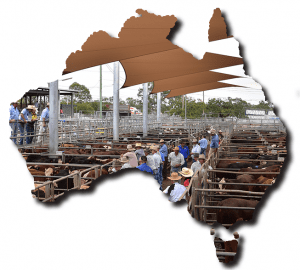 AUSTRALIA’S two largest saleyard representative bodies retain opposing views on the Victorian Government’s decision to mandate the electronic ear tag identification of sheep and goats born after January 1, 2017.
AUSTRALIA’S two largest saleyard representative bodies retain opposing views on the Victorian Government’s decision to mandate the electronic ear tag identification of sheep and goats born after January 1, 2017.
The Australian Livestock Markets Association, as the peak national body representing saleyards and lairages, has urged the Federal Minister for Agriculture Barnaby Joyce to intervene, expressing disappointment at the Victorian decision.
However, the Victorian-based Australian Livestock Saleyards Association said it has been a long-time supporter of mandatory electronic tagging of sheep and supported the decision by the Victorian Minister for Agriculture Jaala Pulford.
ALMA chairman Steve Loane said while the association welcomed technological advances that support, improve and secure industry growth, the decision is a disastrous outcome for the industry, both in Victoria and nationally.
“The operational implications for saleyards have just not been considered.”
Mr Loane said supporters of the implementation of mandatory electronic tagging in sheep and goats appeared to rely on just one study that looked at current technology’s ability to accurately scan stock. The study, on only 100 sheep, showed less than ideal efficacy which resulted in the required rescanning of the entire mob.
“This is just not something you could fathom doing in a commercial situation,” Mr Loane said.
“It is our belief that in a commercial facility with throughput in excess of 50,000 head a day, over $1 million in additional infrastructure would be required, to install sufficient readers, and would add in excess of five hours to a sale.
‘This assumes that the technology is 100 percent accurate ‐ something that is just not able to be guaranteed at the moment,” he said.
“Saleyards have a chain of responsibility to consider.
“We are concerned that the current technology will impact on the commercial speeds of scanning and ultimately have flow on impacts to health and welfare of animals as well as adverse risks to transporters and saleyard operators due to additional time required to be spent in saleyards,” Mr Loane said.
ALMA, along with other peak bodies, supports the continuation of the current national mob‐based tracing scheme under the National Livestock Identification System (NLIS). The current system is effective, simple and well-accepted by industry, it said.
However, ALMA said it will engage with the Victorian Government during the consultation period to ensure industry consultation on the implementation package results in the best possible outcomes for the saleyard industry.
ALSA believes Victorian decision will go national
ALSA executive officer Mark McDonald said the association’s support for mandatory electronic tagging reflected the association’s belief that the current mob-based movement did not provide a robust enough system for biosecurity trace-back and cannot be resourced efficiently enough in the future to compete with an electronic system.
This position is supported by several studies in recent years, including the national traceability exercise Sheepcatcher II.
“We also believe that in the medium term the use of electronic sheep RFID tags will provide a strong base for on farm productivity gains and enhanced feedback from processors to the farm.”
Mr McDonald said the association’s support for mandatory tagging has been based on adequate funding to provide infrastructure and training for saleyards in advance of any scanning deadline.
“We will work with government to ensure that our saleyards are supported in this manner and are kitted out and ready for scanning from July 1 2017.
“We also believe that the introduction of the system in Victoria will ultimately lead to a national system for the sheep industry,” he said.
“It is common practice with large projects to prototype or release in a smaller controlled environment to test and enhance the system before release to the broader market.
“Victoria can provide this role before a national release which will minimise unnecessary duplication of effort in the short term.”
ALSA will work with its members over the next 12 months to ensure the necessary equipment, systems and training is available to ensure the sheep electronic tag system is introduced as smoothly as possible for all stakeholders in the industry.

HAVE YOUR SAY